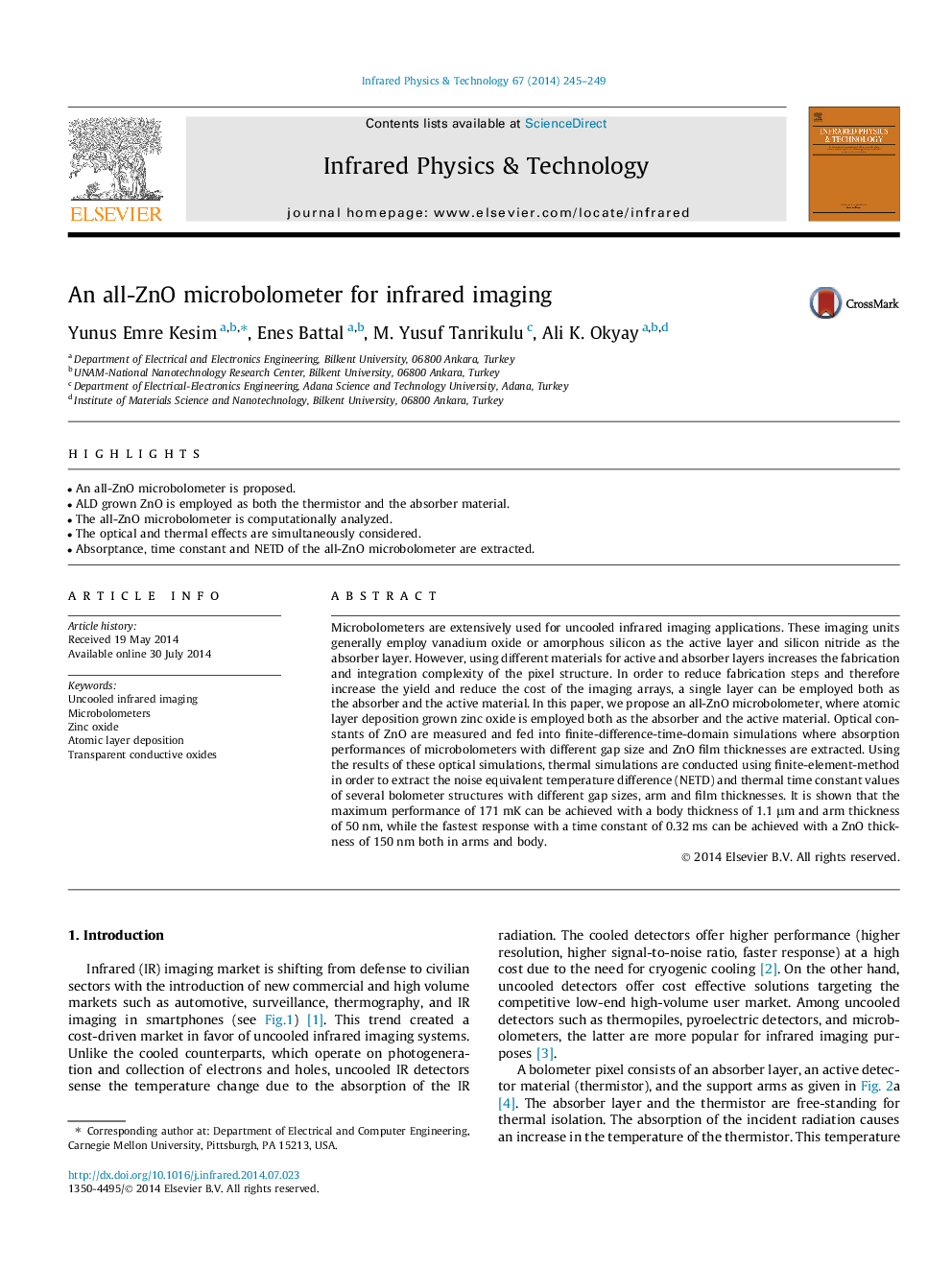| Article ID | Journal | Published Year | Pages | File Type |
|---|---|---|---|---|
| 1784220 | Infrared Physics & Technology | 2014 | 5 Pages |
•An all-ZnO microbolometer is proposed.•ALD grown ZnO is employed as both the thermistor and the absorber material.•The all-ZnO microbolometer is computationally analyzed.•The optical and thermal effects are simultaneously considered.•Absorptance, time constant and NETD of the all-ZnO microbolometer are extracted.
Microbolometers are extensively used for uncooled infrared imaging applications. These imaging units generally employ vanadium oxide or amorphous silicon as the active layer and silicon nitride as the absorber layer. However, using different materials for active and absorber layers increases the fabrication and integration complexity of the pixel structure. In order to reduce fabrication steps and therefore increase the yield and reduce the cost of the imaging arrays, a single layer can be employed both as the absorber and the active material. In this paper, we propose an all-ZnO microbolometer, where atomic layer deposition grown zinc oxide is employed both as the absorber and the active material. Optical constants of ZnO are measured and fed into finite-difference-time-domain simulations where absorption performances of microbolometers with different gap size and ZnO film thicknesses are extracted. Using the results of these optical simulations, thermal simulations are conducted using finite-element-method in order to extract the noise equivalent temperature difference (NETD) and thermal time constant values of several bolometer structures with different gap sizes, arm and film thicknesses. It is shown that the maximum performance of 171 mK can be achieved with a body thickness of 1.1 μm and arm thickness of 50 nm, while the fastest response with a time constant of 0.32 ms can be achieved with a ZnO thickness of 150 nm both in arms and body.
